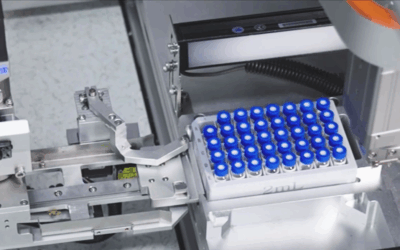Metabolites in safety testing (MIST) has become an integrated part of drug metabolism research in drug development, and is a widely discussed topic within the drug development industry.
Recent guidance from the U.S. Food and Drug Administration (FDA) on safety testing of drug metabolites helps drug developers know when and how to identify and characterize drug metabolites. Identifying and characterizing a drug’s metabolic profile is a necessary step in any preclinical program, critical to assessing human risk before moving to clinical trials.
What You’ll Learn
In this webinar, Dr. Peter Wang*, Senior Director of WuXi AppTec’s drug metabolism and biotransformation platform in New Jersey, presents the updated guidance for metabolites in safety testing and discusses the importance of MIST and why, when and how to conduct MIST studies.
Topics include:
o Regulatory Guidance
o Why to Conduct MIST in Drug Development
o When to Conduct MIST in Drug Development
o When and How to Conduct Met ID to Address MIST
Move your project forward faster.

*Dr. Peter Wang is the Senior Director of Drug Metabolism and Biotransformation at WuXi AppTec, Lab Testing Division. In his current role, he directs operations of the Drug Metabolism department, providing operational, client, and project management support. Dr. Wang has extensive experience in metabolite identification, having worked in in vitro and in vivo DMPK-related fields for more than 15 years. Prior to joining WuXi AppTec in 2008, Peter was a senior scientist at FMC Cooperation, where he served as Study Director for agrochemical metabolism studies in plants and animals.
As a global company with operations across Asia, Europe, and North America, WuXi AppTec provides a broad portfolio of R&D and manufacturing services that enable the global pharmaceutical and life sciences industry to advance discoveries and deliver groundbreaking treatments to patients. Through its unique business models, WuXi AppTec’s integrated, end-to-end services include chemistry drug CRDMO (Contract Research, Development and Manufacturing Organization), biology discovery, preclinical testing and clinical research services, helping customers improve the productivity of advancing healthcare products through cost-effective and efficient solutions. WuXi AppTec received an AA ESG rating from MSCI for the fourth consecutive year in 2024 and its open-access platform is enabling around 6,000 customers from over 30 countries to improve the health of those in need – and to realize the vision that “every drug can be made and every disease can be treated.”
For more information, please visit: https://labtesting.wuxiapptec.com/


